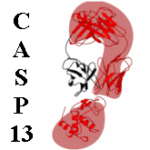CASP is the Critical Assessment of Protein Structure Predictions, a biannual “competition” to determine which prediction algorithm generates the most accurate model. There are several categories in which models will be assessed, including accuracy, topology, and biological relevance. The SIBYLS beamline is participating to provide small-angle X-ray scattering (SAXS) data for––and judging for the first time––the “data-assisted” category. This CASP competition should lead to improvement in predicting protein-protein interfaces and complex structures.
Biosciences Strategic Plan 5-Year Progress Report Released
Associate Laboratory Director for Biosciences Mary Maxon has announced the completion of the Biosciences Strategic Plan 5-Year Progress Report that measures progress towards meeting the 5-year milestones outlined in the Biosciences Strategic Plan (BSP). These milestones address challenges in energy, environment, health, biomanufacturing, and technology development. The report contains information compiled by Biosciences staff responsible for the implementation of the strategies (Strategy Leads) and Mentors, who oversee these five challenge areas, assessing progress toward and highlighting the accomplishments of Biosciences Area researchers.
Jennifer Doudna Shares 2018 Kavli Prize in Nanoscience for CRISPR-Cas9
The Kavli Prize in Nanoscience, given every other year by the Norwegian Academy of Science and Letters and the Kavli Foundation, was awarded this year to Jennifer Doudna, a faculty biochemist in the Molecular Biophysics and Integrated Bioimaging (MBIB) Division, and two colleagues who developed the powerful nanoscale tool CRISPR-Cas9 to edit DNA. The $1 million award, announced May 31, will be shared by Doudna, an HHMI investigator and professor of molecular and cell biology and of chemistry at UC Berkeley, Emmanuelle Charpentier of the Max Planck Society, and Virginijus Šikšnys of the Institute of Applied Enzymology in Vilnius, Lithuania. The 2018 Kavli Prizes will be awarded on September 4 in Oslo, Norway. “This prize recognizes the profound value of curiosity-driven research, and represents the contributions of our lab members. It’s an honor to share The Kavli Prize with my colleagues,” Doudna said. Read the UC Berkeley news release.
National Academies Report Outlines Vision for Improving STEM Graduate Education
Biosciences ALD Mary Maxon served on a National Academies of Sciences, Engineering, and Medicine committee that released a consensus study report entitled “Graduate STEM Education for the 21st Century” at a May 29 event in Washington, DC. Building on the strengths of the current graduate enterprise, the report describes the attributes of an ideal STEM graduate education system, identifies core educational competencies that are common across all STEM fields, and recommends changes in the graduate education enterprise to make the system more student-centric and better prepare students for the careers that lie ahead. The committee was chaired by Alan Leshner, chief executive officer emeritus of the American Association for the Advancement of Science. The study was sponsored by the National Science Foundation, the Burroughs Welcome Fund, the Institute of Education Sciences, and the Spencer Foundation. Read more in the National Academies press release.
JGI Develops, Validates Integrated Approach to Genome Recovery from Metagenomes
Through the JGI’s Emerging Technologies Opportunity Program (ETOP), researchers have developed and improved upon a dereplication, aggregation and scoring tool (DAS Tool) that combines existing DNA sequence binning algorithms, allowing them to reconstruct more near-complete genomes from soil metagenomes compared to other methods.
- « Previous Page
- 1
- …
- 121
- 122
- 123
- 124
- 125
- …
- 214
- Next Page »
Was this page useful?








